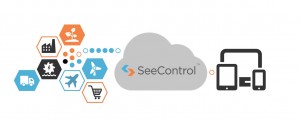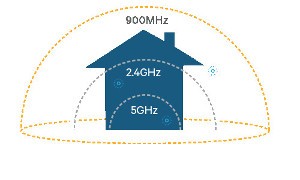Intel’s Internet-of-Things gateway solutions and gateway development kits offer business IoT users a valuable solution for enabling IoT connectivity with existing industrial equipment or other legacy systems.
These gateway solutions are the result of a collaboration between Intel, McAfee and Wind River, aiming to provide IoT developers with pre-integrated and pre-validated hardware and software building blocks for gateways in IoT networks.
Intel’s gateway ecosystem provides hardware and software components that enable security, manageability and connectivity in your IoT deployment – along with ease-of-use. The technology supports a wide range of operating systems and hardware options to provide developers with choice and flexibility, making it easier for businesses to integrate with new or existing sensors, cloud partners and management solutions.
The incorporation of McAfee Embedded Control security technologies into Intel’s platform integrates the hardware-based security of Intel processors with operating system and application software security, keeping your data secure from the network edge to the cloud.
These gateways can connect legacy systems with the network, enabling seamless and secure data flow between edge devices and cloud computing or other Internet-based IoT services. Employing gateways to connect legacy hardware (without native Internet connectivity) to IoT networks enables businesses to unlock the value of big data and analytics from IoT-connected industrial machines and equipment without having to invest in replacing or upgrading this plant.
Intel’s IoT Platform, including gateways, makes it easier to manage your end-to-end IoT solution, and to enable analytics and secure performance to turn data at the network edge into action and business intelligence, delivering real commercial value.
Enterprise IoT solutions based on Intel’s powerful IoT Gateway Technology provide leading performance and security, enabling near-real-time analysis and tighter, more efficient process controls.
Furthermore, Intel’s hardware partners manufacture many different gateways compatible with the Intel IoT platform – with these designs covering a range of different industry verticals for industrial IoT users.
For example, if you’re working on an automotive application, you may look at one of several choices from Intel’s partners that specialise in IoT gateway hardware for transportation or automotive use.
Intel gateways are available with a range of processors, from single-core up to quad-core options. Generally the more powerful multi-core platforms feature increased RAM and flash storage capacity. The operating system and software ecosystem is also important to consider, since capitalising on the multicore processor requires appropriate programming to deliver the best performance.
The purpose of a gateway is to connect many sensors and devices together with different interfaces and aggregate their data and communications to the IoT network at a single point. This means that the I/O hardware available on the gateway is another important factor when choosing the right gateway for your application, to ensure you can connect with your sensors and devices.
Intel IoT Gateway Technology can efficiently aggregate and filter data at the network edge, allowing businesses to analyse and act upon information closer to its source, and in near real time. To deliver the most transformative business value, gateways need to be intelligent and have sufficient processing power to enable filtering, aggregation and end-to-end analytics on large volumes of data.
Processing and filtering data and performing some analytics on the gateway processor, close to the network edge, also reduces the amount of data that needs to be transmitted, reducing bandwidth costs. All these features help enable business users to realise the greatest possible value from the IoT.
Intel IoT gateways support a range of different interfaces, including Bluetooth, 802.15.4/ZigBee or 6LoWPAN, CAN bus, ModBus and many more. The choice of hardware I/O interfaces is particularly important where the goal is to interface legacy equipment – which may interface over RS-485, ModBus, CAN, industrial Ethernet, ZigBee or other protocols – to the IoT network.
The flexibility of an IoT gateway is particularly valuable in this kind of application, allowing existing machinery and legacy systems to be connected to IoT analytics and cloud computing at a relatively low cost.

Intel’s IoT Gateway Platform supports a range of different operating systems, including Windows 10 IoT and Snappy Ubuntu Core, so users who prefer either Windows or open-source Linux ecosystems are accommodated.
Wind River Linux 7 is also supported, including integration with Wind River’s other IoT tools and development tools such as Wind River Workbench, Helix Device Cloud and Helix App Cloud. It’s available preconfigured with Wind River Helix Device Cloud agent, providing cloud connectivity to facilitate device configuration, file transfers, data capture, and a rules engine for analytics.
To support this hardware and software ecosystem for the IoT in an easy-to-use and accessible way, Intel provides in-depth documentation, tools and resources. With built-in tutorials in the Wind River Intelligent Device Platform, you can quickly begin working with tools like Wind River’s Helix App Cloud.
To help with ease of administration and device management, Intel provides MeshCentral, a free and open-source solution for managing all types of devices across a wide variety of operating systems and processor types.
This solution is secure, customisable and easy to install, and it allows users to maintain ownership and control of all their own data. The MeshCentral device management system makes it easier to get legacy devices connected to the cloud, and it is fully interoperable with Intel’s gateway technology and the rest of their IoT ecosystem, making it easy to manage your Intel IoT gateways and other devices.
As an example of Intel’s IoT Gateway Technology at work in a real-world IoT deployment, Intel is working with Cleantech San Diego and other organisations to demonstrate how solutions using Intel’s technology can help optimise water and energy usage in commercial buildings.
At the Port of San Diego, the Intel IoT Gateway-based solution monitors HVAC power, lighting and energy use, resulting in cost savings and reduced greenhouse gas emissions.
As you can imagine, there are many options to consider in the hardware, software and implementation areas of your next Internet of Things project.
And this is where the LX Group us ready to work with you. We have end-to-end experience and demonstrated results in the entire process of IoT product development, and we’re ready to help bring your existing or new product ideas to life. Getting started is easy – click here to contact us, telephone 1800 810 124, or just keep in the loop by connecting here.
LX is an award-winning electronics design company based in Sydney, Australia. LX services include full turnkey design, electronics, hardware, software and firmware design. LX specialises in IoT embedded systems and wireless technologies design.
Published by LX Pty Ltd for itself and the LX Group of companies, including LX Design House, LX Solutions and LX Consulting, LX Innovations.




 As well as using the APIs to connect with SeeControl, you can also use the extensive libraries in the SeeControl platform. These libraries offer extensive support of open standards and vendor-specific standards for a wide range of embedded devices, sensors and actuators, communication and networking devices and gateways. For example, existing format and protocol adapters are provided for CoAP, MQTT and Modbus, to name just a few.
As well as using the APIs to connect with SeeControl, you can also use the extensive libraries in the SeeControl platform. These libraries offer extensive support of open standards and vendor-specific standards for a wide range of embedded devices, sensors and actuators, communication and networking devices and gateways. For example, existing format and protocol adapters are provided for CoAP, MQTT and Modbus, to name just a few. 
 As this technology becomes more available in the market, it’s likely that it will begin to supplant Bluetooth in certain consumer electronics applications, as well as supplanting other wireless standards such as existing Wi-Fi and 802.15.4 networks in the Internet-of-Things domain where relatively long-range communication with a large number of low-bandwidth devices is required.
As this technology becomes more available in the market, it’s likely that it will begin to supplant Bluetooth in certain consumer electronics applications, as well as supplanting other wireless standards such as existing Wi-Fi and 802.15.4 networks in the Internet-of-Things domain where relatively long-range communication with a large number of low-bandwidth devices is required.
 To help you get started easily, the software development process is simplified through the use of Atmel Studio 7, Atmel’s flagship IDE for their microcontroller products.
To help you get started easily, the software development process is simplified through the use of Atmel Studio 7, Atmel’s flagship IDE for their microcontroller products.